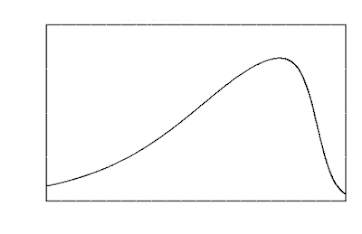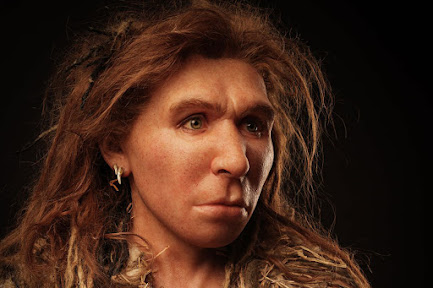.... it is remarkably easy to convince the educated classes of something. One only has to get the information printed in the right places. The educated can be made to believe that Iraq has weapons of mass destruction, or that cigarettes and canola oil are healthy (a typical claim in the midcentury), or that the high numbers of breakthrough COVID cases in countries with 90% vaccination rates are caused by the 10% of unvaccinated people. They can be made to believe anything, really.
“The aim of totalitarian education has never been to instill convictions but to destroy the capacity to form any.”
“The ideal subject of totalitarian rule is not the convinced Nazi or the convinced Communist, but people for whom the distinction between fact and fiction (i.e., the reality of experience) and the distinction between true and false (i.e., the standards of thought) no longer exist.”
“In an ever-changing, incomprehensible world the masses had reached the point where they would, at the same time, believe everything and nothing, think that everything was possible and that nothing was true. ... Mass propaganda discovered that its audience was ready at all times to believe the worst, no matter how absurd, and did not particularly object to being deceived because it held every statement to be a lie anyhow. The totalitarian mass leaders based their propaganda on the correct psychological assumption that, under such conditions, one could make people believe the most fantastic statements one day, and trust that if the next day they were given irrefutable proof of their falsehood, they would take refuge in cynicism; instead of deserting the leaders who had lied to them, they would protest that they had known all along that the statement was a lie and would admire the leaders for their superior tactical cleverness.”
How do you know… ?
by Marty's Mac -- Jan 10 2022How do you know a variety of facts about the world? For instance, how do you know that matter is made up of atoms and electrons?
Presumably you learned about this in school. A teacher gave you a textbook that explained the experiments that established atomic theory. We knew already, before any electronic scanning microscope, that matter came in discrete units because the result of chemical reactions always yields perfect whole-number ratios. Subatomic particles were discovered with the cathode tube, Rutherford discovered the nucleus by shooting radiation at gold, Millikan discovered the charge of an electron with his famous oil drop experiment… the list of experiments in an introductory text goes on. An educated person who is not working in the hard sciences has, likely, already forgotten most of these. But they were in all likelihod presented to him, back in high school.
But none of these answers, even if you remember them, actually explain how you know about the atom. Unless you are in a very rarified group of chemistry and physics enthusiasts, you have not performed any of these experiments. So how do you actually know about atoms?
What happened, really, was that an authority figure gave you certain information, a significant amount of which you also read (in a text that is culturally authoritative), and you believed it. You believe stories like these because you have been raised to believe them and have not decided to radically doubt the authorities who passed this information on to you. Things like atomic theory seem to be widely believed, and people say it’s important for all sorts of technical applications, and these technologies seem to work very well. You believe about atoms, almost certainly, second-hand.
But it is not just atoms. How about the existence of Kazakhstan? It is on maps, people in the news talk about it as if it is real (and currently undergoing serious civil unrest), there are images of people in a place that is called Kazakhstan, and so on. This is also how you have any understanding of health and the body, the workings of your government, and so on. The educated mind has acquired most of its understanding through appeals to authority. The critical thinking that is so vaunted in education is mostly about judging whether or a certain authority is good (or, ultimately, approved), and in some cases whether it has internal inconsistencies that might discredit it.
I am saying this not to knock education as useless and only for the sheeple. There is not an alternative to appeals to authority. In any sufficiently complex technological or scientific society, the accumulated knowledge is too vast for an individual to replicate his ancestors’ discoveries for himself. This is already true in fairly technologically primitive societies: Which plant fibers are good for clothing and textiles, and which are useless? Which mushrooms are edible? What domesticated or semi-domesticated crops have been handed down to you? How does one hunt or make weapons for hunting? All of these are inherited knowledge or technology, and we are miles away from atomic theory. But the dependence on authority becomes much more acute for more highly technologically developed societies like our own. There is no viable alternative to an education in which appeals from authority are prominent. The only real alternative, completely erasing authority from the equation, is to drop back to some level below hunter-gatherer and hope to acquire enough knowledge over a single lifetime to manage bare subsistence.
Continuing Education
Education is, as they like to say now, a lifelong process. For the highly educated, all of whom adopt this model of trusting certain authorities for information about how the world works, and especially for those embedded in the “knowledge economy”, this kind of learning does not end (or does not largely end) with formal schooling about atoms and molecules. It continues into adult life. The teachers and textbooks are replaced by culturally authoritative figures like the newsman or public intellectuals (often academics or businessmen) and sources like The New York Times. And in the contemporary marketplace, if you don’t like these, other authorities are on offer.
The continuing education of the educated (most typically this education focuses on current affairs) has two consequences. The first is that it is remarkably easy to convince the educated classes of something. One only has to get the information printed in the right places. The educated can be made to believe that Iraq has weapons of mass destruction, or that cigarettes and canola oil are healthy (a typical claim in the midcentury), or that the high numbers of breakthrough COVID cases in countries with 90% vaccination rates are caused by the 10% of unvaccinated people. They can be made to believe anything, really. The same way the teacher explains about the electrons and the textbook backs her up, the newsman can go on Fox or print in Vox some story, and the educated and informed person will summarily believe it. Fairly recently the elites in America have suddenly noticed that this may not always work to their advantage, and Hillary Clinton coined the term “fake news” to explain her defeat (a term that was immediately taken up by Donald Trump and, like almost all of Hillary Clinton’s political moves, backfired spectacularly). However, this gullibility is not confined to conservatives (nor to liberals). It is a simple result of a large percentage of the population becoming lifelong learners.
The second consequence is that the cultural norms of society can change rapidly and over much less than a single lifetime. There have been a bevy of cultural norms that have been repealed or replaced over any adult person’s lifetime. The most obvious in the current moment is extreme fear of sickness, adoption of universal masking, and acceptance of ever-increasing government authority in the name of health. However, many other changes have occurred within a single lifetime: The widespread acceptance of gays and lesbians (currently this is happening with trans people at an even more breakneck pace), the non-acceptance of overt displays of (certain kinds of) racism, ignoring one’s dinner partner in favor of reading (once considered horribly rude with a book, now commonplace with a phone), ordering food instead of cooking, and if we go further back, the acceptance of left-handedness as a manner of writing (as late as the early sixties, this was disallowed in American schools). These are all changes that were normalized in less than the time it takes for an infant to become a legal adult. Despite this speed, they are often not noticed (many boomers lived through the acceptance of left-handedness and barely think about it), or thought of as so backwards that no one could possibly disagree (this was the case two years after the repeal of sodomy laws). A whole population can be freshly educated in the right way, whatever that right way happens to be today (and quite independent of whether it is good or bad for society), and tomorrow behave as though they grew up believing these things their whole life long.
This peculiarly modern form of changeability and indeed gullibility is not present in older, less literate societies. This is not to say illiterate or less literate societies don’t believe crazy things. Of course they do. But these crazy things are generally learned in childhood: how shamanistic magic can cure or curse, the presence of spirits all around us, the importance of smoking bodies before burial to reach the afterlife, and so on. The feudal serf may harbor a host of wacky superstitions, but they were acquired in his early education (not in a school so much as around the village) and became more or less fixed for his entire adulthood. Literacy and lifelong learning create opportunities for people to acquire new fundamental beliefs their whole life long. The gullibility of childhood can become permanent.
The sorts of rapid changes we have all experienced in the past two years in relation to COVID would not have been possible without a highly literate society. At the beginning of the pandemic, when news was first coming out of China, it was racist to be at all concerned about the virus. Then it became irresponsible and scientifically invalid to wear a mask. Then it became scientifically necessary to wear a mask (perhaps even two or three, simultaneously) and maintain social distancing. Then the science said it was okay to not practice social distancing if one attended the right kind of protests. Then it was necessary to get two vaccines, and that would end the pandemic. Then there was a booster one would get once a year, now down to every four months. At each stage, people have wholly bought into the new belief system which may have contradicted the belief system of last month or last week. Science changes, or rather the story that the cultural authority is telling changes, and so people’s fundamental beliefs can be updated more or less live. This is not because the whole population has actually properly learned something. They have just been informed of a change of plan.
As I stated before, there is no solution that will keep us from having to learn by appealing to authority, because there is too much to know for any person to build up everything from scratch. Everyone has a matrix of beliefs which they have built up partially from direct experience (the minority) and partially from authorities they trust (the majority). But in an age of constant learning, it is much easier for baseless beliefs to infiltrate a belief matrix over time. When people worry about propaganda, I think this largely what they mean: That the set of new information being acquired will contain beliefs that, if one were to build them up from scratch (which most people cannot do, and no one can do with all the new information), would not hold up to scrutiny. This has been, for all of human history, an ever-present possibility in childhood, but children don’t have the mental capacity to worry about this.
This is not a place to “solve” the problem of propaganda. Such a solution (if it were possible) would be worthy of a lengthy book on epistemic philosophy or sociology. All I want to point out here is that propaganda, and easily-propagandized populations, are a result of education and cannot be fixed by simply educating people better. The very instruments for increasing knowledge in fact introduce the greatest possibility for the rapid adoption of false beliefs. If we want to live with the benefits of literacy (and we have no choice, this is the world as it is, unless we suffer a severe dark age), we must learn to live with and, if we are very lucky and work very hard to change society, mitigate the dark side of that social technology.






















